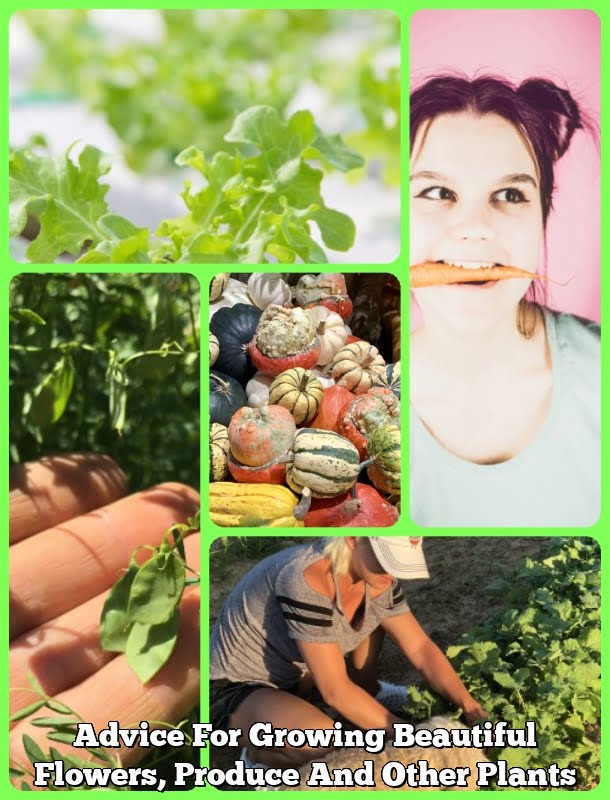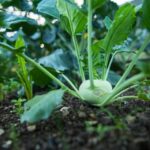Are you interested in venturing into vegetable gardening? If so, consider growing cucumber plants for a bountiful harvest. Cucumbers are not only delicious and versatile in the kitchen, but they also offer a myriad of benefits that make them an excellent addition to your garden. From their ease of cultivation to their health benefits, there are numerous reasons why you should consider including cucumber plants in your vegetable garden.
When it comes to growing cucumber plants, the first step is choosing the right variety that suits your garden and taste preferences. With various options available, selecting the best type of cucumber can greatly impact the success of your harvest. Whether you prefer slicing cucumbers for salads or pickling cucumbers for preserving, understanding the different varieties will help you make an informed decision.
Once you have chosen the perfect cucumber variety, it’s crucial to prepare the soil and plant the seeds properly. Cucumber plants thrive in well-drained, nutrient-rich soil with plenty of sunlight.
Proper planting techniques will ensure strong and healthy growth for your cucumber plants, setting the stage for a successful harvest. As you embark on this exciting gardening journey, it’s essential to learn about caring for your cucumber plants as well as dealing with any potential pests or diseases that may arise.
Choosing the Right Varieties of Cucumber for Your Garden
When it comes to choosing the right varieties of cucumber for your vegetable garden, there are several factors to consider. Different cucumber varieties have varying sizes, colors, textures, and flavors, so it’s important to select the ones that best suit your preferences and growing conditions.
Here are some popular cucumber varieties to consider for your garden:
- Pickling Cucumbers: These varieties are ideal for making pickles and are typically smaller in size with a firm texture. Some popular pickling cucumber varieties include Boston Pickling, National Pickling, and Carolina.
- Slicing Cucumbers: If you’re looking for cucumbers to use in salads or for snacking, consider growing slicing cucumber varieties. They are often larger with a crisp and juicy texture. Some common slicing cucumber varieties include Marketmore, Straight Eight, and Spacemaster.
- Seedless Cucumbers: Seedless or English cucumbers are long and slender with thin skin. They are perfect for fresh eating or adding to sandwiches. Some popular seedless cucumber varieties include Diva, Tasty Green, and Sweet Success.
Before making a decision on which variety of cucumber to grow in your garden, take into account your climate, available space, and intended use for the cucumbers. Additionally, consider if you want bush or vining varieties as they have different growth habits.
By choosing the right cucumber varieties for your garden based on these considerations, you can ensure a successful harvest of delicious homegrown cucumbers tailored to your preferences. Researching different options will also help you make an informed decision about which types of cucumbers will thrive in your specific gardening environment.
Preparing the Soil and Planting Cucumber Seeds
When preparing the soil for planting cucumber seeds, it is important to ensure that the soil is well-draining and rich in organic matter. Cucumber plants thrive in soil with a pH level between 6.0 and 7.0, so it’s crucial to test and adjust the soil acidity if necessary. Before planting the seeds, incorporate compost or well-rotted manure into the soil to provide essential nutrients for the growing plants.
Once the soil is prepared, it’s time to plant the cucumber seeds. Here are some steps to follow when planting cucumber seeds:
- Prepare the bed: Create rows in your garden bed, spacing them about 3-4 feet apart to allow ample room for spreading vines.
- Planting depth: Plant the cucumber seeds about 1 inch deep into the soil, with 4-6 seeds per hill or mound.
- Spacing: If planting in rows, space the seeds about 6-12 inches apart within each row.
After planting the seeds, water the area thoroughly to ensure good seed-to-soil contact. Keep the soil consistently moist until germination occurs, which typically takes around 7-10 days. Once seedlings have emerged, thin them out so that there are only two or three of the strongest plants remaining in each hill or row.
Following these steps will help set your cucumber plants up for success and contribute to a bountiful harvest of fresh cucumbers for your enjoyment throughout the growing season. With proper care and attention during this initial stage of growth, you can look forward to healthy and productive cucumber plants in your vegetable garden.
Caring for Cucumber Plants
Watering Your Cucumber Plants
When it comes to watering your cucumber plants, consistency is key. Cucumbers thrive in well-drained soil that is consistently moist but not waterlogged. It’s important to water your plants regularly, especially during hot summer months when the soil tends to dry out quickly.
Aim to water your cucumber plants deeply at least once a week, ensuring that the water reaches the root zone. However, be cautious not to overwater, as this can lead to problems such as root rot. Using a soaker hose or drip irrigation system can help deliver water directly to the base of the plants while keeping the foliage dry.
Fertilizing Your Cucumber Plants
Proper fertilization is crucial for the healthy growth and development of cucumber plants. Before planting your cucumbers, amend the soil with compost or well-rotted manure to provide essential nutrients such as nitrogen, phosphorus, and potassium. Throughout the growing season, you can feed your cucumber plants with a balanced fertilizer every 3-4 weeks or according to the manufacturer’s instructions.
Alternatively, you can use organic fertilizers such as fish emulsion or seaweed extract for a more natural approach. Remember to follow recommended dosages and avoid over-fertilizing, as this can cause excessive foliage growth at the expense of fruit production.
Mulching Your Cucumber Plants
Mulching plays a crucial role in maintaining soil moisture and suppressing weeds around your cucumber plants. Organic mulches such as straw, grass clippings, or shredded leaves can help retain moisture in the soil while providing a protective layer against temperature fluctuations. Apply 2-4 inches of mulch around each plant, taking care not to mound it against the stems which may lead to stem rot.
Mulching also helps prevent direct contact between fruits and the soil, reducing the risk of spoilage and disease. Additionally, mulch serves as a natural barrier against certain pests that may otherwise make their home in bare soil near your cucumbers.
By implementing these best practices for watering, fertilizing, and mulching your cucumber plants vegetable gardening will ensure healthy growth and bountiful harvests for an abundant crop of delicious cucumbers.
Dealing With Common Pests and Diseases in Cucumber Plants
One of the challenges that vegetable gardeners face when growing cucumber plants is dealing with common pests and diseases. These can significantly impact the health and yield of your cucumber crop if not properly managed. Some of the most common pests that can affect cucumber plants include aphids, spider mites, and cucumber beetles. These pests can cause damage to the leaves, stems, and fruits of the plants.
In addition to pests, cucumber plants are also susceptible to certain diseases such as powdery mildew, downy mildew, and bacterial wilt. These diseases can result in wilting, yellowing of leaves, and reduced fruit production. It’s important for vegetable gardeners to be proactive in preventing and managing these issues to ensure a successful harvest.
There are several strategies that can be employed to deal with pests and diseases in cucumber plants. This includes practicing crop rotation, using row covers to protect young plants from pests, and applying organic or chemical-based treatments when necessary. Additionally, maintaining good airflow around the plants by proper spacing can help prevent the development of certain diseases like powdery mildew.
| Common Pests | Common Diseases |
|---|---|
| Aphids | Powdery Mildew |
| Spider Mites | Downy Mildew |
| Cucumber Beetles | Bacterial Wilt |
Training and Supporting Cucumber Plants for Maximum Yields
When it comes to growing cucumber plants in your vegetable garden, training and supporting them properly is essential for maximizing yields. Cucumber plants are known for their vining growth habit, so providing the right support will help prevent them from taking over your garden space and also protect the fruit from rotting on the ground.
One popular method for supporting cucumber plants is by using a trellis or a cage. This not only helps save space in the garden but also makes it easier to harvest the cucumbers.
When using a trellis, it’s important to start training the vine to climb early in the season by gently tying the main stem to the trellis as it grows. This will encourage the plant to grow vertically, allowing for better air circulation which can help prevent diseases.
In addition to using a trellis, some gardeners also opt for using vertical supports such as stakes or strings. These methods not only provide support but can also make it easier for the cucumber plants to receive adequate sunlight and airflow. By training and supporting your cucumber plants properly, you can look forward to a bountiful harvest of this refreshing and versatile vegetable.
| Support Method | Benefits |
|---|---|
| Trellis | Saves space, easier harvesting, better air circulation |
| Vertical supports (stakes/strings) | Easier sunlight exposure, better airflow |
Harvesting and Preserving Your Cucumber Crop
When it comes to harvesting and preserving your cucumber crop, timing is crucial. Cucumbers should be harvested when they are firm, green, and at least 6-8 inches in length for slicing varieties, while pickling cucumbers are typically harvested when they are 2-4 inches long.
It’s important to check the plants regularly once they start producing fruits, as cucumbers can grow quickly and become overripe if left on the vine too long. Overripe cucumbers tend to have a bitter taste and can affect the flavor of your dishes.
To harvest your cucumbers, simply hold the fruit in one hand and use a pair of garden shears or a sharp knife to cut the stem about a quarter inch above the fruit. Be careful not to tug or pull on the cucumber, as this could damage both the fruit and the plant.
Once harvested, cucumbers can be stored in the refrigerator for up to a week. Keep them in a plastic bag or wrap them in plastic wrap to help retain their moisture.
Preserving Your Cucumber Crop
If you find yourself with an abundance of cucumbers from your vegetable gardening efforts, there are several ways to preserve them for future use. One popular method is pickling, which involves immersing cucumbers in a mixture of vinegar, salt, sugar, and spices to create delicious pickles that can be enjoyed year-round.
Another option is to freeze your cucumbers by slicing or dicing them and storing them in an airtight container or freezer bag. While frozen cucumbers may not retain their crisp texture when thawed, they can still be used in recipes such as soups, stews, and smoothies.
For those who prefer to enjoy their cucumbers fresh throughout the year, consider making cucumber relish or chutney that can be canned using traditional home canning methods. These preserves make excellent condiments for sandwiches and grilled meats, adding a burst of flavor to your meals even when cucumber season is over. By taking the time to properly harvest and preserve your cucumber crop, you can continue to savor the fruits of your vegetable gardening labor long after summer has ended.
Delicious Recipes and Creative Ways to Use Your Homegrown Cucumbers
In conclusion, growing cucumber plants in your vegetable garden can be a rewarding experience with numerous benefits. Not only do cucumbers provide a delicious and versatile addition to your meals, but they also offer health benefits and are relatively easy to grow. By choosing the right varieties, preparing the soil properly, and providing proper care and support, you can enjoy a bountiful cucumber crop.
Once you have harvested your homegrown cucumbers, there are countless creative ways to use them in the kitchen. From refreshing salads and pickles to tasty smoothies and even skincare products, cucumbers can be used in a variety of delicious recipes and DIY projects. Whether you are an experienced chef or just starting out in the kitchen, experimenting with different cucumber dishes can add a fresh and healthy twist to your meals.
In addition to their culinary uses, homegrown cucumbers can also be preserved for future enjoyment. Whether you choose to pickle them for long-term storage or freeze them for later use, there are various methods for preserving your cucumber crop.
By incorporating these preservation techniques into your harvest routine, you can continue to enjoy the fruits of your labor throughout the year. Overall, growing cucumber plants in your vegetable garden not only provides an abundance of fresh produce but also opens up a world of culinary possibilities for you to explore.
Frequently Asked Questions
How Do You Take Care of a Cucumber Plant?
Taking care of a cucumber plant involves ensuring it receives plenty of sunlight, consistent watering, and fertile, well-draining soil. Pruning is also important to encourage healthy growth and prevent disease.
Do Cucumber Plants Need to Climb?
While some cucumber varieties don’t necessarily need to climb, providing support such as a trellis or cage can help keep the fruit off the ground and prevent rotting. It also saves garden space and makes harvesting easier.
What Month Do You Plant Cucumber?
Cucumbers thrive in warm weather, so they should be planted after the last frost in spring when the soil has warmed up. This is typically around late spring or early summer, depending on your specific climate zone.

If you’re looking to get into vegetable gardening, or are just looking for some tips on how to make your current garden better, then you’ve come to the right place! My name is Ethel and I have been gardening for years. In this blog, I’m going to share with you some of my best tips on how to create a successful vegetable garden.





